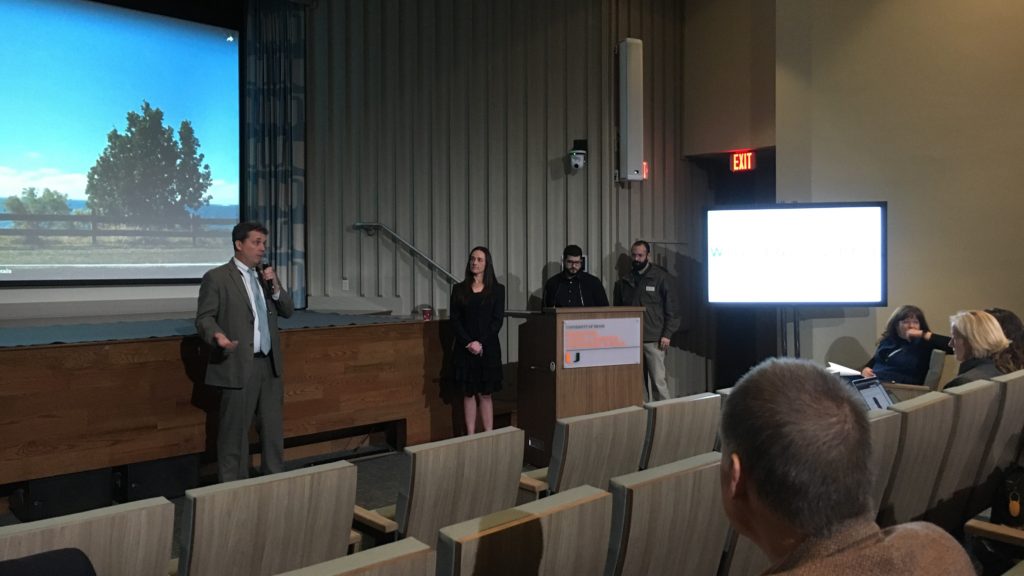Local Officials Tell Scientists How They Battle Climate Change
Annali HaywardJanuary 27, 2020

Mayor Mike Davey addressed an attentive room at the Climate Symposium (Annali Hayward/Key News)
The Miami Climate Symposium 2020, convening last week on the University of Miami’s Rosenstiel School of Marine and Atmospheric Science campus, had to look no farther than the next island to see how threatened communities are dealing with extreme weather.
The Key Biscayne mayor and Village Manager were among the first presenters, sandwiched between a Lawrence Berkeley National Laboratory researcher and a Columbia University professor. They shared how a barrier-island village of 13,000 is dealing with the realities of climate change on a daily basis and fighting back.
“Our residents have real fears,” said Village Manager Andrea Agha, adding citizens are increasingly well informed in their “grassroots” demands for local government to resolve the environmental issues that impact everyday life.
She laid out the community’s “major vulnerabilities” – beach erosion, flooding, an aging stormwater system, outdated power and telecommunication infrastructures and sole access over a low-lying causeway.
“I’ve been told a Category 2 [hurricane] could take out Bear Cut Bridge,” said Mayor Mike Davey.
Bear Cut Bridge links Key Biscayne to Virginia Key and the mainland.
To battle beach erosion, the Village is funding a study, which parallels a U.S. Army Corps of Engineering (USACE) feasibility study, in hopes that the USACE will include Key Biscayne in a 50-year plan to replenish beaches.
“We lose five feet of sand every year,” Agha said.
She noted inlet dredging to the north has interrupted the natural replenishment, leaving Key Biscayne beaches “starved for sand” and unable to shield shorelines in communities farther south.
Stormwater drainage, another major vulnerability, relates directly to water quality at the beach and in the bay. Agha said the Village Council voted to raise stormwater utility fees in order to move ahead with $18 million worth of improvements to the system. The Village is reviewing engineering proposals.
“When we discharge into the bay, it should be responsibly, using the latest technologies,“ she said.
The Village knows it can’t fund projects alone and is looking into partnering with other levels of government. The strategy for underground power lines and telecoms goes beyond being a local issue.
“We need a guarantee of federal assistance and long-term — not a patch,” Agha said.
The Village has established the position of Chief Resilience Officer to coordinate sustainability efforts and hopes to have it staffed by next quarter.
Officials also know the issues go far beyond political solutions. The Village is looking for “the very best” science and technology to solve local problems.
“We want to challenge the status quo. With the science, anything is possible,” Agha told an audience of scientists.


